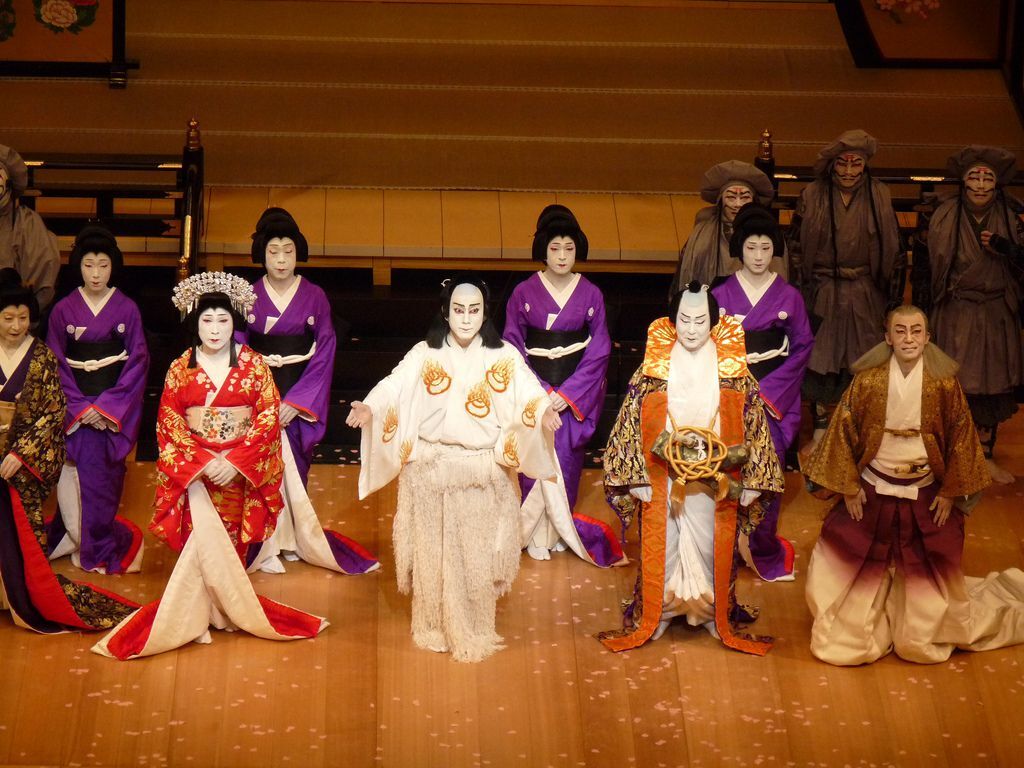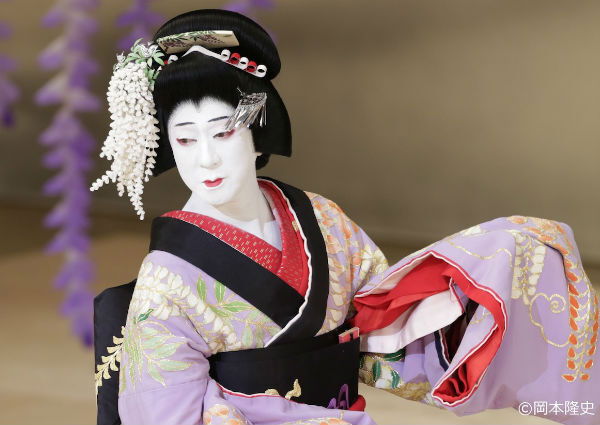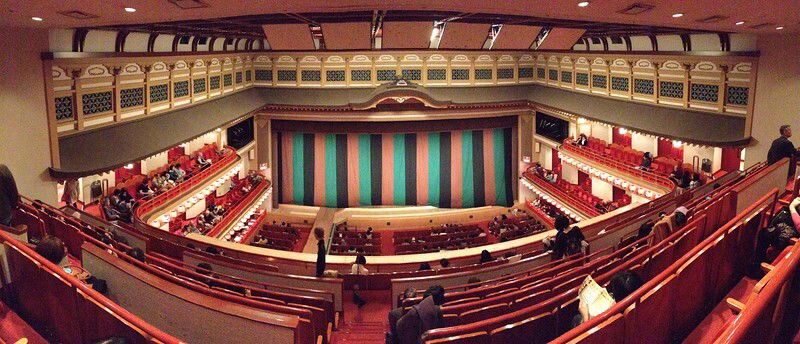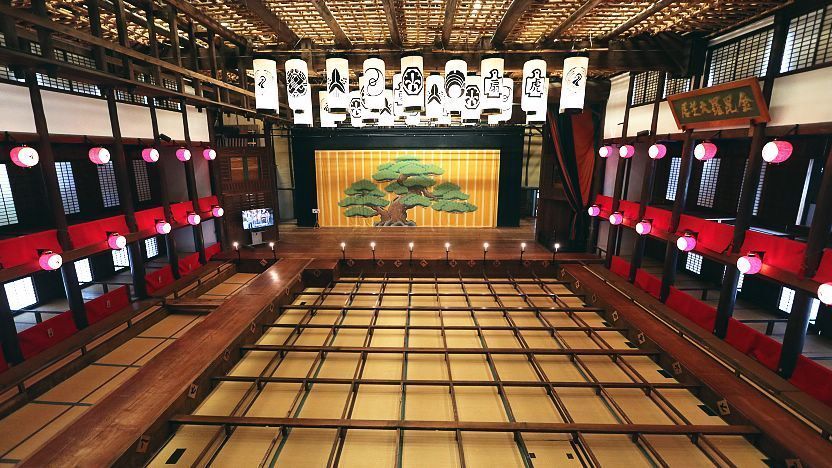Need to Know

Kabuki is a form of classical Japanese theatre characterized by its all male casts as well as elaborate, exaggerated costumes, makeup, wigs, sets, and acting. It is not to be confused with the two other major forms of classical theatre in Japan: noh and bunraku. Kabuki is recognized as a UNESCO Intangible Cultural Heritage. It originated in the Edo Period of Japanese history (1607-1867) as an exclusively female artform. However, as it became more popular, the Tokugawa Shogunate began to place regulations which prevented women from participating.
The Japanese characters that make up the word "kabuki" (歌舞伎) mean "song," "dance," and "acting skill," all of which are important aspects of kabuki performance. Kabuki combines artforms which had previously had been performed separately from each other.
The stylized movements and extravagant design elements of kabuki help the audience better follow a production's story. Kabuki often uses an older form of the Japanese language that can be difficult even for native Japanese speakers to understand. Of course, these stylized movements also aid those who do not know Japanese at all.
In addition to dramatic movement and costumes, kabuki also utilizes trap doors and revolving sets which add to the visual appeal of the performance. The specialty is a hanamichi, or footbridge, that goes through the audience to the back of the theatre. Live music and sound design with traditional instruments help with ambience and storytelling.

Pictured above: company of Ebizo Ichikawa XI
Antique as well as newly written kabuki shows are performed in Japan today. Plots and genres of these productions vary. Popular types include: jidai-mono (historical plays), sewa-mono (contemporary plays depicting real life), drama, moral conflict, romance, tragedy, and traditional stories. However, productions often focus on one part (usually the most exciting or climatic part) of a larger story. It is recommended that audience members research the story beforehand so they have context for the action happening on stage. In the modern day, some theaters allow audience members to rent headsets that provide English narration and explanation. Most paper programs also include an English synopsis of the story.
Kabuki troupes are close-knit, hierarchical, and generational. Each actor has a yago, or hereditary stage name associated with his troupe.

Pictured above: Bando Tamasaburo in 'The Wisteria Maiden' (Fujimusume)
Whether performing or viewing, kabuki is an all-day affair. Performances are split up into two or three segments (one in early afternoon, one in evening) and the segments split into acts. You may buy tickets for each segment or even for each act. The length of the performance varies depending on the content. Short dramas and dances (or single acts) last 30 minutes to an hour. Matinees and evening performances can last 4 hours each. Prices vary widely depending on the quality of seating and how many segments or acts you attend.
Kabuki can be found in big cities and smaller communities alike. Theaters where kabuki is frequently performed today include Kabukiza Theatre in Tokyo, Minamiza Theatre in Kyoto, and Shochikuza Theatre in Osaka. These and other modern theatres have Western-style seats.

Pictured above: interior of the Minamiza Theatre
Historical kabuki theatres include Kanamaruza Theatre in Kotohira and Uchikoza Theatre in Uchikoza. Kabuki and other performances are held infrequently at these theaters. They are mainly tourist attractions to show what traditional Kabuki theaters were like. They do not have Western-style seating.

Pictured above: interior of the Kanamaruza Theatre
